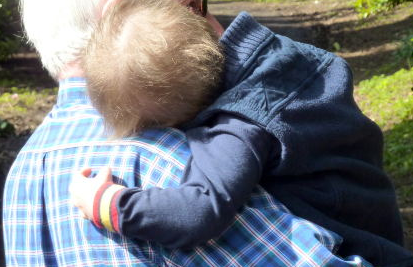In London one of the latest things you can do is attend a cuddle workshop, where people wander around a cushion lined studio spooning total strangers. Apparently the idea is to rediscover non-sexual touch and affection.
These parties, which started in the US and have also appeared in Australia, are clearly a fad, and I’m sure they attract more than their fair share of Harry Potter-reading, pyjama-wearing weirdos, but they’re also perhaps an early indication of the fact that an increasing number of people, many of whom now live alone, crave the sensation of being physically held and touched.
Like many fringe ideas, it may also represent an unmet need – in this case a remedy for sadness or loneliness. In Japan, for example, the latest fad is a cat cafe where people wander around a room littered with free-roaming cats whilst sipping a latte. These Cuddle Parties and cat cafes represent a safe form of intimacy-on-demand that appeals to singles and married couples alike, many of whom are either too busy or tired to become involved with any other form of shared physical activity.
On one level this craving for instant intimacy is ironic because in many other areas we are being told to accept as “normal” behaviour that is exactly the opposite. Physically touching a colleague at work (and I’m talking here about affectionate hugs) is now strictly verboten.
Research by Manchester Metropolitan University also says there is a growing anxiety in childcare circles about touching children. Recent panics include a male teacher who instructed a small child to apply a plaster himself because the teacher was too afraid to touch the child. This is clearly insane but the madness isn’t restricted to loony politicians and pediatricians.
Organisations are also trying to convince us that reducing human contact is a good thing because it saves us time and money. It’s the new economy dude. Society 2.0. They are liars. Reducing human contact saves them time and money.
It’s the same with social networking sites. People have an average of 150 friends on Facebook. But these are digital acquaintances. These are superficial friends and we are confusing familiarity with intimacy. Hence our growing need for physical contact. Even the environment has been roped in to help sell us the lie that less human contact is healthy. But even if these e-vangelicals are right they are still wrong. For instance, sociologists at the University of Arizona and Duke University North Carolina have found that Americans have fewer real friends than they used to.
In 1985, the average American had three people to talk to about their problems. Now the figure is just two. The results of this study have been disputed, but the fact remains that we are drifting away from physical contact and communication.
Longer working hours are one reason for this, but the real culprit is technology. Use of the internet and mobile phones has reduced face-to-face contact. People need to intimately connect with other people. If they don’t, there is a danger that they will spend too much time inhabiting virtual worlds like Second Life. This is not good for them and is not good for the planet either. People need people because happiness comes from intimate interactions with friends and family.
Moreover, as everyone instinctively knows, new ideas are born serendipitously in places like stairwells and over lunch, not at overly orchestrated brainstorms or government summits where most of the solutions are so small that they could be mistaken for homeopathic remedies.
We need to establish an intimate relationship with the thought that a life lived remotely, or at a physical distance from others, is ultimately unbearable. Time, in other words, for a physical revolution.

